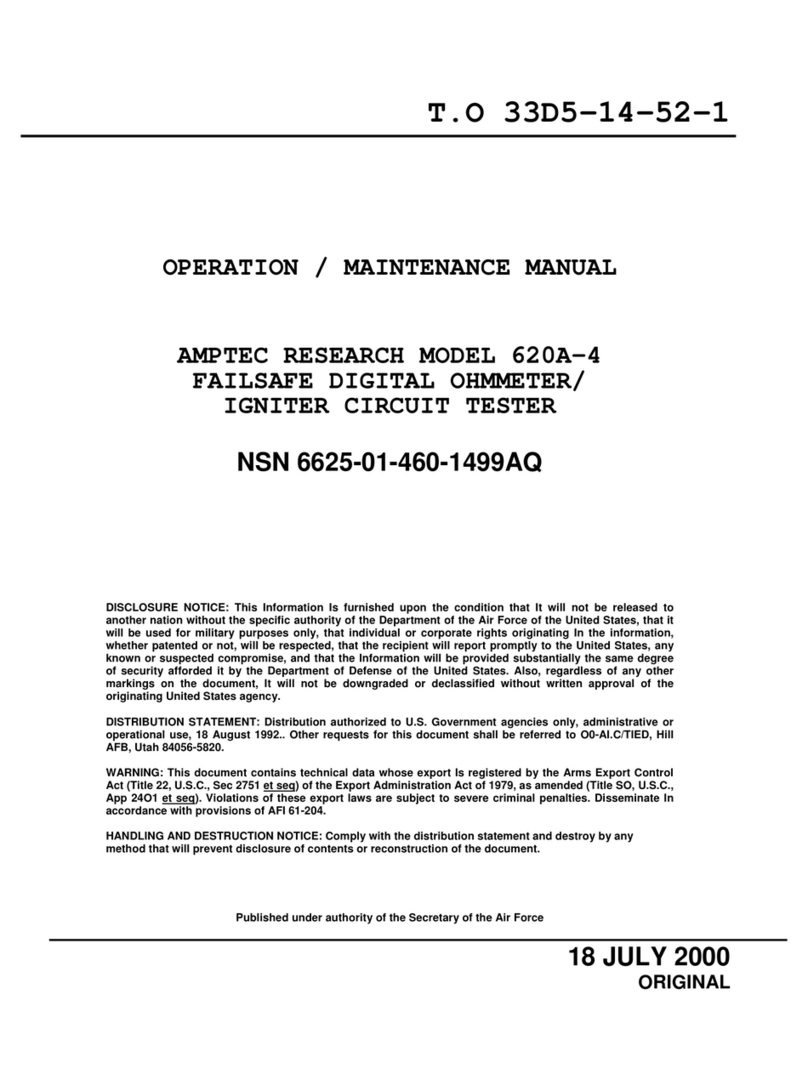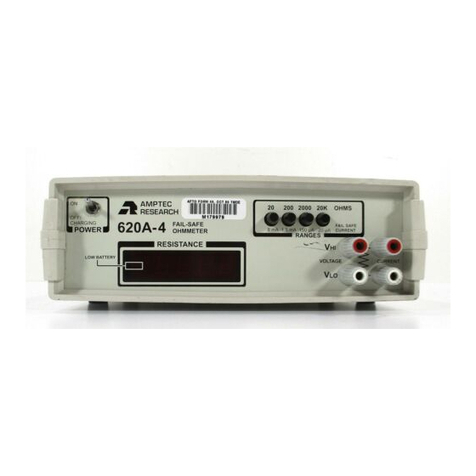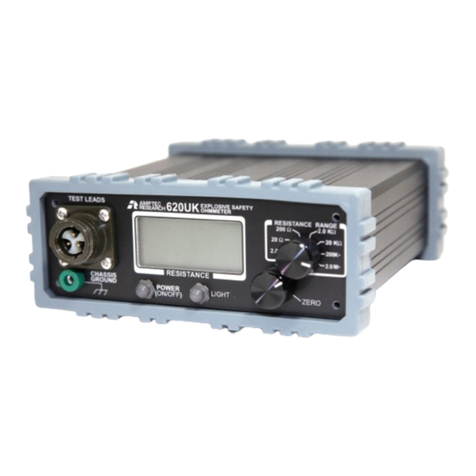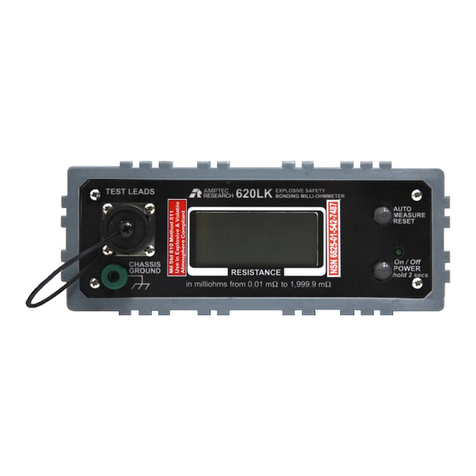
Option 401: Handheld Single Probe Leads
Option "401" is a gold plated 620 series compatible
handheld probe (one black probe & one red probe ) lead
set terminated in single points. The OP401 handheld
probes allow for easy access to connector socket wiring
(i.e. drone parachute squib sockets), recessed surfaces,
and parts (i.e. flares) that alligator clip can't reach.
Option 430 4000-ITS Mating Connector
AMPTEC offers an adapter connector that provides
equivalent circular socket connections (J9 Connector)
found on SIMPSON 4000 ITStm, and Alinco 101 series
Circuit Igniter Testers. In some applications (i.e. AIM-7
Missile harnesses) regular alligator clip leads cannot
properly connect to ( screw on ring collar type
connectors) the small recessed electrical sockets inside a
connector harness that normally mates with the J9 style
connector. This item is included in the AMPTEC 620A-
4 NSN 6625-01-460-1499NM package. The “OP430” has
the AMPTEC 620A Ohmmeter act as a 2-wire ohmmeter
from the OP430 connector out to the resistance under test.
Option "247" - Isolated Continuous Operating Power -
Allows the AMPTEC 620A series tester safely operate
continuously 24 hours a day 7 days a week. It includes an
isolated AC/DC wall adapter. This option uses a 3.0 KV
AC and DC isolated circuitry (i.e. medical grade DC to
DC convertor) to safely supply the 5.0 VDC need to
operated the units main measurement electronics
normally supply by batteries. This 3 KV medical grade
electrical isolation is the same safety isolation that cardiac
monitors use. That is they are AC line powered (i.e. 120
VAC) while electrodes are connected to a human patients'
chest. The unit’s Safety Board Approved failsafe ohmmeter
current source is still running independent of the meter’s 3.0
KV DC supply isolation circuitry. UL 61010 AC Line Isolation
Test Report confirms Isolation to 3 KV AC input protection.
Option “500” Optically Isolated Analog Output
This rear panel mounted isolated analog DC Voltage
output signal is directly proportional to the 620 tester's
ohm display measurement. (i.e. 1.2345 VDC for 12.345
ohms). It is used to track 620 tester measurements for
datalogging purposes with an external device (i.e chart
recorder, system DMM with GPIB). Isolation protection
is rated @2000 volts peak to insure any instrument con-
nected to "Option 500" has virtually no impact on the
620 series tester's safety.
Option 300: 4-Wire Gold Plated Kelvin Lead Set
Option "300" is a general purpose Gold Plated
Kelvin four wire Leads for all AMPTEC 620 series
Testers. Kelvin clips provide a 4 wire Kelvin Gold
plated low thermal EMF connection (minimizes the
thermocouple effect) with most connections. The
Option “300” is the recommended test lead set for
any AMPTEC 620 Series Igniter Tester for
calibration or precision measurements (i.e
AMPTEC 620ES and 620RK). The 4 wire Kelvin
connection is important when measuring less than
1.0 ohm, and also automatically eliminates test
lead length offset and test lead contact resistance
errors. Option “300” is a shielded 48" lead set
terminated in ½" opening gold plated Kelvin clips.
The option "300" can clip easily to wires, pins, and
medium size (up to ½" diameter conductors). The
dual banana plug ends connect directly to the 620
tester's front panel input terminals. (see Option
"320" for replacement Kelvin clip ends only)
Option 305: Banana-to-Banana Cable
Option "305" is a 48" shielded cable terminated in
dual banana plugs at both ends.
Option 320: Kelvin Clips
Option "320" are the gold plated kelvin clips used
on the Option "300" cable set . These clips may be
used when making custom cables or when repairing
Option "300".
Option 360: Heavy-Duty Clips
Option "360" are Gold-plated jumper cable (large
jaws) type clips used on the Option "350" cable.
They are still Kelvin Clips because the insulated
upper and lower jaw (jumper cable appearance)
integrity is maintained. These may be used when
making custom heavy duty cables that open to 1
1/2 " wide (i.e bolt heads)..



































